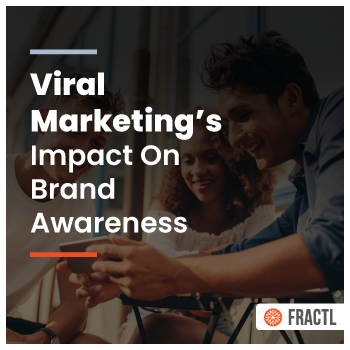So you’re interested in viral marketing to create awareness for your brand. That’s great!
But wondering what to expect and how viral marketing can impact your brand awareness?
Well, it depends on your brand’s target audience and the way that correlates to the content you produce.
For starters, viral campaigns are a good fit for those who want broad, general brand exposure and links, and because they’re so broadly engaging, they tend to generate links naturally for longer periods of time.
If this sounds like something you’re interested in, then you’re in the right place. So what can you expect when promoting a viral campaign and how can it improve awareness for your brand?
Let’s take a look.
Viral Campaigns
A great example of a viral campaign is one we did for Superdrug Online Doctor called Perceptions of Perfection Part II. The campaign was a second-generation study focusing on men, which was created due to the high volume of publisher reception from the first-generation campaign about the female body.
While you never know for sure if a campaign will go viral, you can make sure the content includes certain characteristics that enhance its viral potential.
In this case, the Perceptions of Perfection topic appealed to a massive audience because we didn’t limit ourselves by being specific to one demographic.
Instead, we gave one image of a man to 19 different designers around the world and asked them to “photoshop and retouch this man to make him more attractive to the people of your country.”
Why This Matters: Global audience appeal helped one placement from The Huffington Post naturally turn into multiple placements to its sister sites in different languages.
Since the campaign was created to have a mass audience appeal, our promotional targeting was geared toward quickly getting this into the hands of writers in each country highlighted in the campaign with major domain authority and high social engagement on their articles. This way, the campaign would spread like wildfire and generate brand awareness.
In fact, this campaign spread naturally to other big news outlets so quickly that we didn’t have time to reach out to sites like Business Insider, Yahoo, and Vanity Fair before they’d picked up the story.
To date, this campaign has generated 240 dofollow links, totaling 670,000-plus social shares and 31,003 total authority points.
Continuing To Create Brand Awareness
Viral campaigns also tend to continue generating links of all shapes and sizes way after their initial launch date. Another campaign we created for Superdrug Online Doctor called Evolution of Miss Universe is a great example of that.
The Evolution of Miss Universe was a campaign that first launched in the spring of 2016. It secured media coverage quickly and went viral twice due to its timely nature and emotional involvement of beauty standards for women over time.
We were pleasantly surprised to see Business Insider, which picked up the exclusive in 2016, write another article on our study for the Miss Universe pageant in 2017 – over nine months later. The timeliness and evergreen nature of the project were the key factors to its recurring popularity.
How Did They Do it?
So how did these examples of viral marketing improve their brand awareness? The answer is simple, they caught the attention of a large audience.
Making sure your brand stays connected to the topic is the more tricky part. We’ve learned over time that tangential topics generate the most viral content but it’s important to make sure the topic relates back to your brand’s central purpose.
How To: To figure this out for your individual brand, using content clusters to map out different topics surrounding your central brand mission.
For example, in the second campaign we looked at by Superdrug Online Doctor, “Evolution of Miss Universe,” the campaign idea relates back to Superdrug’s main topic, health. Having a healthy weight and BMI was exhibited in the depiction of the size and shape of the past pageant winners over time.
Determining Success
The number one goal of a viral campaign is to get a lot of media attention and these campaigns were able to do that through their large audience appeal, timeliness, and evergreen nature.
Viral campaigns are similar to a lot of big news stories. One big publication gets ahold of the information and it begins to spread quickly for a few days. Once the hype dies down, the story or campaign might become newsworthy again and generate another media frenzy. This results in a reoccurring trend of link generation over a long period of time.
While every campaign might not be as successful as these were, knowing what factors contribute to successful viral campaigns will give you an idea of what to look for when launching your own campaign or working with a content marketing/digital PR agency on your brand’s awareness.
Evaluating Brand Awareness
Organic traffic that a viral campaign brings to your brand can get your business or product in front of the eye of people who might not see it otherwise. Creating a viral campaign that relates back to your businesses central mission is important but at the same time, tangential content will be relatable for a larger audience. Keep your topic relatable, findings informative, and design simple.






